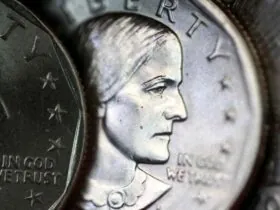Collecting coins and bills is a fascinating hobby that can also be highly rewarding financially. Certain coins, such as rare one-cent pieces, have sold for thousands of dollars to collectors due to their rarity, condition, and unique features. Understanding what makes a coin or bill valuable can help enthusiasts uncover hidden treasures in their collections.
The Fascination with Wheat Pennies
This Article Includes
One of the most iconic collectible coins is the “Wheat Penny,” a one-cent coin issued in the United States between 1909 and 1958. These pennies, featuring Abraham Lincoln on the front and two wheat stalks on the back, are highly sought after by collectors.
Among these, specific variations hold exceptional value. A notable example is the 1917 Wheat Penny with a distinctive error known as “doubling.”
What Makes the 1917 Wheat Penny Special?
The 1917 Wheat Penny with doubling is a result of a minting error where two impressions are slightly offset. This error creates a raised duplicate image on the coin, making it unique and highly valuable to collectors.
Key features to identify this coin include:
- Doubling on the Word “Trust”: The doubling can be observed in the phrase “In God We Trust” on the obverse.
- Date Doubling: The number “1917” on the coin also shows doubling.
Collectors are advised to use a magnifying glass to inspect these coins, as the doubling is subtle and requires close examination. Importantly, if the coin were double minted instead of doubled due to an error, one image would be raised while the other would appear flat.
How Much Is the 1917 Wheat Penny Worth?
The value of the 1917 doubled-die Wheat Penny depends on its condition:
- Average Circulated Value: Approximately $160
- Higher-Grade Circulated Value: Around $240
- Uncirculated Value: Ranges from $5,400 to as much as $7,500
Coins in uncirculated condition are prized for their pristine appearance and command higher prices in the market.
Understanding the Value of Coins and Bills
The worth of a collectible coin or bill isn’t just determined by its age or appearance. It depends on three critical factors:
- Rarity: The fewer examples of a coin or bill in existence, the more valuable it becomes.
- Condition or Grade: Well-preserved items in mint or uncirculated condition fetch higher prices.
- Market Demand: Items that are in high demand among collectors often sell for a premium.
The Four Types of Value in Numismatics
According to experts, the value of a coin or bill can be categorized into four types:
- List Value: The average price most dealers sell a coin or note for.
- Purchase Price: The amount a buyer is willing to pay for the item.
- Retail Value: The price a specific dealer sells a coin or note for.
- Wholesale Value: The price merchants use in transactions among themselves.
These values fluctuate based on the coin’s condition, rarity, and current market trends.
Conclusion
Whether you’re an avid collector or a novice just starting, understanding the factors that influence the value of coins and bills can be incredibly rewarding. Rare coins like the 1917 Wheat Penny demonstrate how a seemingly ordinary item can turn into a valuable collectible due to its history, condition, and uniqueness. With careful research and attention to detail, you might discover treasures in your own collection.







Leave a Reply